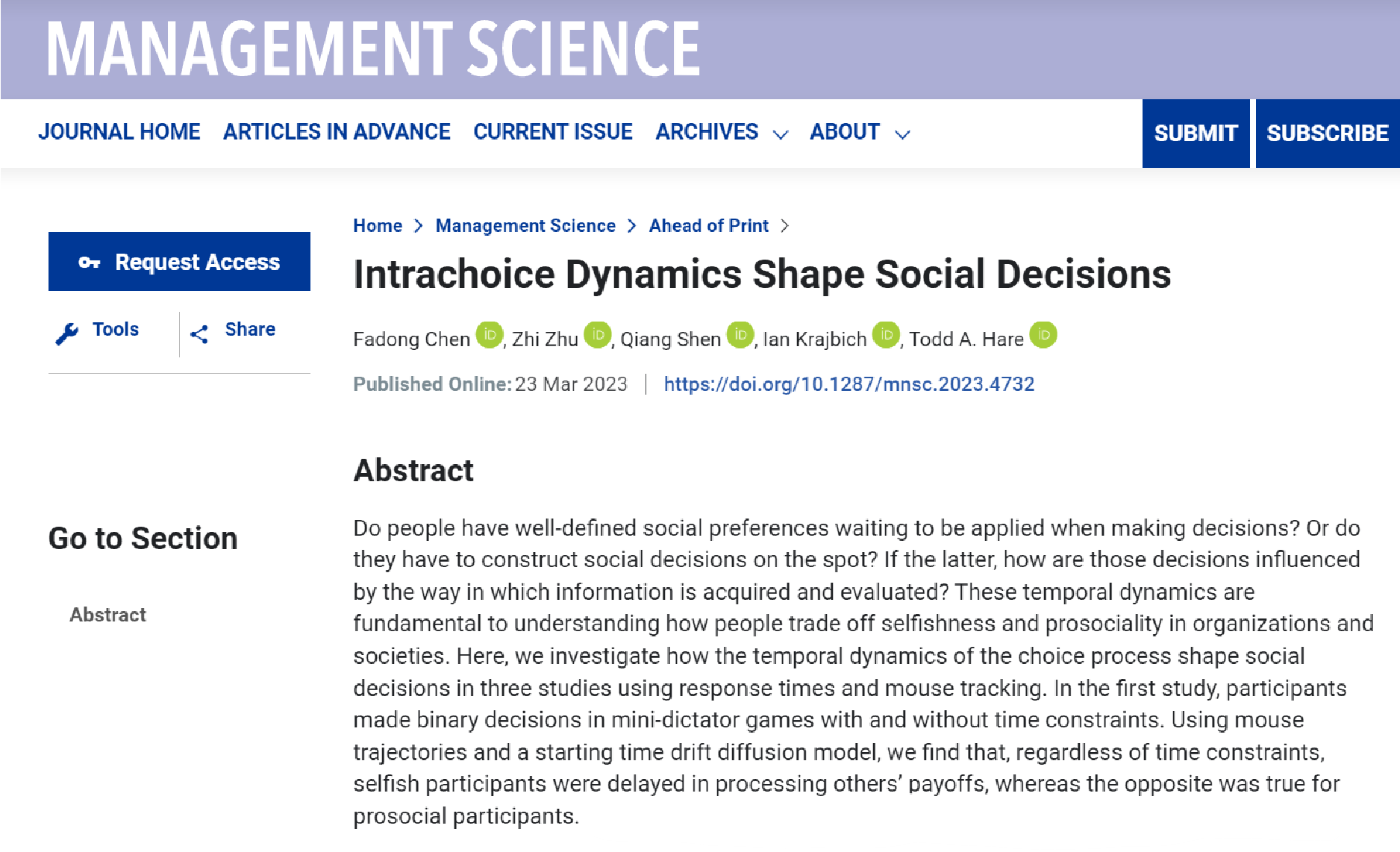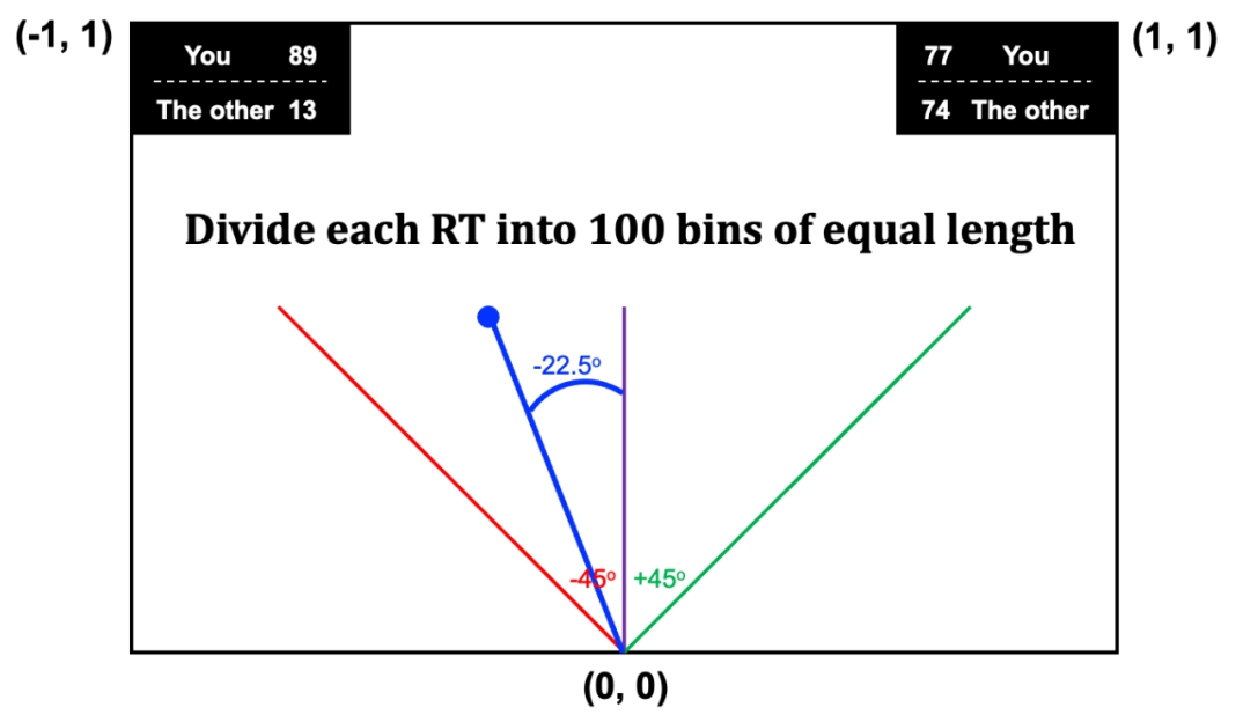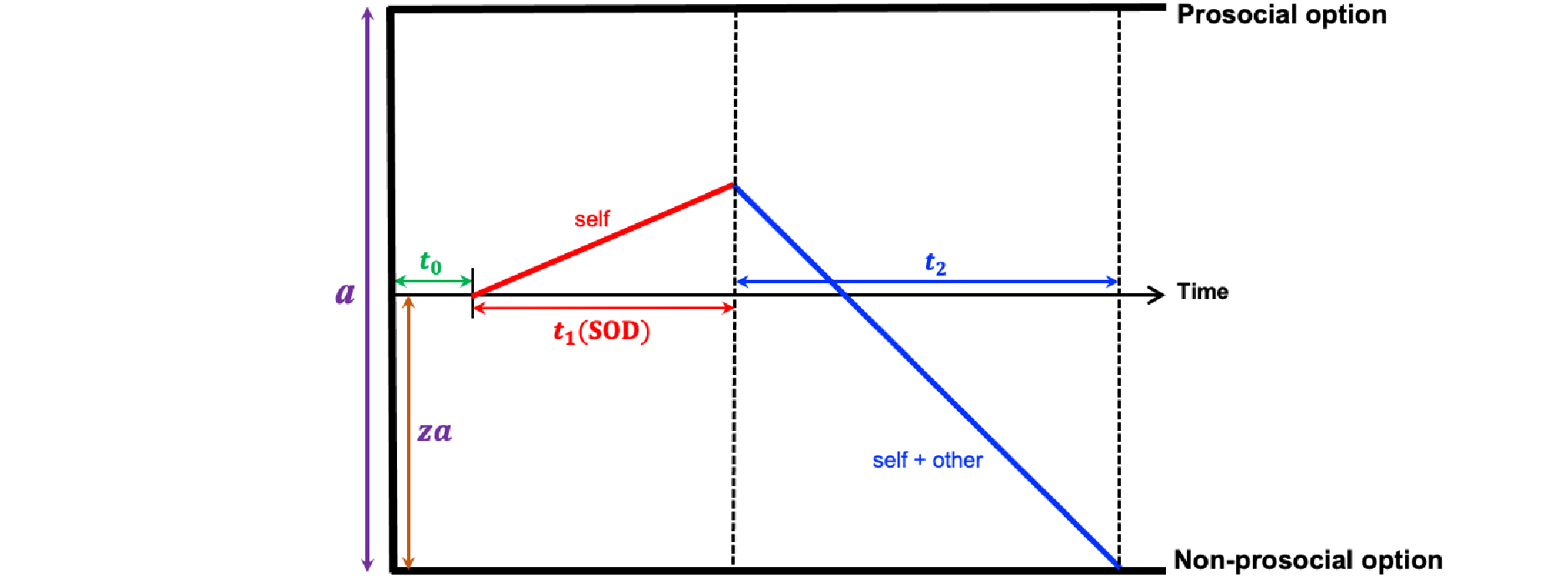
Have you noticed that after a mere five minutes of ending a text conversation with your friend about a certain product, the ads of such product appear on your shopping apps?
Even if you pay deliberate attention to cleaning up your browser history, the internet figures a way out to recommend content that you have been interested in recently.
These seemingly coincident experiences are not coincidental in the era of big data. Due to mobile phone monitoring, big data discrimination, targeted marketing, etc., data such as our personal information and preferences have long been in the hands of big data.

|
©千库网 | Qianku Network |
You might want to consider either disabling the monitoring permission on your mobile phone or altering your browsing habits, such as your product searches and video viewing, so that the big data analysis tool cannot accurately determine your true personal preferences.
|
■ |
But is that an effective strategy? |
CHEN Fadong, a researcher at the School of Management Zhejiang University, and his doctoral student ZHU Zhi, along with Professor SHEN Qiang of Shanghai International Studies University, Professor Ian Krajbich of Ohio State University, and Professor Todd Hare of the University of Zurich, recently published a study titled "Intrachoice Dynamics Shape Social Decisions" in Management Science, one of the UTD24 management journals.

|
The paper was published online on March 23, 2023. Click here to learn more details. |
The study found that the "mouse movement trajectory" produced unconsciously when deciding will also expose your personal preferences, as the mouse movement trajectory can be used to deconstruct your thinking process for making a decision.
|
CHEN Fadong | 陈发动 School of Management, Zhejiang University |
||
|
|
||
|
|
|
Academic Background: Researcher and Doctoral Supervisor of the Department of Data Science and Management Engineering, School of Management Zhejiang University. His research fields are digital intelligent economics, behavioral decision-making and decision-making neuroscience, behavioral and experimental economics, brain-computer intelligent management decision-making. You can learn more about Prof. CHEN Fadong’s academic background here |
|
They Discovered That the Trajectory of Your Mouse can Expose Your Secrets |
Using mouse movement trajectory tracking technology, the research team recorded the mouse movement trajectory of participants during the decision-making process. The results showed that the mouse movement trajectory could reveal the decision-maker’s internal struggle between selfishness and prosocial behavior. Specifically, the mouse movement trajectory was smoother and more direct when participants made selfish decisions, while it was more curved and indirect when participants made prosocial decisions.
Firstly, they designed an experiment concerning the selection of a money allocation scheme. In each decision-making scenario of the experiment, participants needed to choose one of two options where there were conflicts and trade-offs between selfish and prosocial.
As shown in Figure 1, participants can choose the selfish option in the upper left corner (self payoff 89, others’ payoff 13), or the prosocial option in the upper right corner (self-payoff 77, others’ payoff 74). Such decisions reflect the common prosocial behavior in daily life, such as whether or not to donate or to pay attention to fairness, etc.

|
Figure 1. Examples of Decision-making Scenario and Mouse Movement Trajectories in the Experiment |
The experimental scheme contained a total of 300 different decision-making scenarios and 3 different time constraints: time pressure, time delay and time freedom.
In order to conduct the study, the experiment recorded both the selection results and reaction time of participants for each decision-making scenario. Additionally, the mouse movement trajectory of the participants was tracked in each decision on a real-time basis. This process involved tracking the dynamic movement of the mouse from the middle bottom of the display to the selection of one option (red or blue trajectory in Figure 1).
The experimental results show that there is strong heterogeneity in people’s social preferences. People who are selfish choose more selfish options, while those who are prosocial choose more prosocial options. Moreover, people with different social preferences also experience different changes in their preferences under time pressure and time delay conditions.

|
©千库网 | Qianku Network |
CHEN Fadong’s team further analyzed the mouse movement trajectory from both temporal and spatial dimensions. Specifically, they divided the mouse movement trajectory and reaction time of each decision into 100 equal bins, and calculated the angles of the mouse position of each bin with respect to the origin (lower middle) (as shown in Figure 2).
Then, they studied how these two attributes, namely the self-payoff and others’ payoff, affect the angular change at each time point, that is, how self payoff and others’ payoff affect the mouse movement process.

|
Figure 2. Example of the Angle of the Mouse Position to the Origin |
By analyzing this data, they found that for individuals with different prosocial preferences, the impact of their own and others’ payoff on mouse movement trajectory and the starting time of their impact on mouse trajectory are different.
They divided all participants into four groups based on their prosocial preferences: extremely selfish, selfish, prosocial, and extremely prosocial, as shown in Figure 3.
The results showed that, the more selfish a person is, the greater the impact of self-profits on mouse movement trajectory will be; the more prosocial a person is, the greater the impact of others’ payoff on mouse movement trajectory will be.

|
Figure 3. The Change of Difference in the Impact of Own Payoff and Others’ Payoff on Mouse Trajectory (Time Dimension) |
Meanwhile, through the analysis of mouse movement trajectory, it is possible to identify the time point at which two attributes, namely the self-payoff and the others’ payoff, begin to significantly affect mouse movement. This mouse trajectory–derived self-onset delay (MTSOD) is called attribute latency.
The results showed that MTSOD was highly correlated with the prosocial preferences of the participants (as shown in Figure 4). To be specific, those who are more selfish process the "self-payoff" information quickly, while those who are more prosocial process the "others’ payoff" information faster.
By analyzing the mouse movement trajectory data, individual preferences can be well revealed.

|
Figure 4. Correlation between Prosocial Preferences and MTSOD |
|
Personal Preference Can Be Revealed and Changed by Making Use of "Mouse Movement Trajectory" |
How can mouse trajectories reveal personal preferences? This is because mouse trajectories can deconstruct the dynamic cognitive processing course behind behaviors.
The above analysis of mouse movement trajectory data reveals that the cognitive mechanism behind prosocial behavior follows the cognitive processing course of "sequential comparison between attributes", and deconstructs the key cognitive component of this cognitive processing mechanism - attribute latency.
Concerning the cognitive processing mechanism featuring "sequential comparison between attributes", CHEN Fadong’s team constructed a "cognitive computing model with starting time" to better describe and predict human behavior by depicting the dynamic cognitive processing process behind the behavior, as shown in Figure 5.
In this model, the key cognitive component of attribute latency is depicted in time period t1 (SOD), in which the brain processes one attribute first. Only after the end of time period t1 does the brain begin to process both attributes simultaneously. When processing two attributes, the brain accumulates evidences continuously, and the participant makes the choice after the accumulated evidence reaches the upper or lower boundary.

|
Figure 5. Schematic Diagram of Drift Diffusion Model with Starting Time |
They simulated the model based on reaction time and decision result data.
The attribute latency simulated by this model is highly consistent with the attribute latency (MTSOD) estimated based on mouse trajectory data (as shown in Figure 6), which further proves the rationality of the deconstruction of above cognitive mechanism and the construction of cognitive model.

|
Figure 6. Attribute Latency Based on Mouse Trajectory (MTSOD) and Attribute Latency Based on Reaction Time (RTSOD) Are Highly Correlated |
Meanwhile, this study further verifies that, compared to other models, the "drift diffusion model with starting time" can better explain and predict human preferences and their relative changes under different conditions.
The robustness of the above conclusions is corroborated by a behavioral experiment and an additional mouse tracking experiment.
Finally, by utilizing the principles of machine learning, the study proves that the cognitive component of attribute latency has a strong between- subjects prediction ability.
Compared with other models, the "drift diffusion model with starting time" also has stronger explanatory and predictive capabilities in terms of between-subjects prediction.

|
©千库网 | Qianku Network |
|
The Value and Meaning of This Research is Not to Prompt a Cautionary Use of the Mouse |
With the rise of the internet and technology, it has become increasingly difficult to avoid the partial leakage of personal privacy data, such as personal characteristics and preferences.
One of the most common actions when using a computer is mouse movements, which are almost unconscious and inevitable. Economic and social activities that rely on websites and applications can only be completed through a series of mouse actions.
However, the purpose of the study is not to uncover secrets or discourage the use of the mouse. Instead, it aims to better understand how mouse movements can reveal personal preferences and cognitive processes.
In recent years, push ads on websites and apps have become more appealing, and searching for related products has become more convenient, saving time in the age of information overload. However, it is essential to ensure the proper and ethical use of this data. This research, funded by the National Natural Science Foundation of China and the Ministry of Science and Technology, has significant academic and practical value. It can aid governments, enterprises, and scholars in making better use of users’ mouse movement trajectory data, leading to more standardized and ethical practices.

|
©千库网 | Qianku Network |
|
■ |
Summary |
In summary, human preferences are a result of dynamic information processing by the brain. This discovery allows policy makers or business managers to use various intervention plans to alter the cognitive processing course of the brain during the decision-making process, leading to changes in human behavior towards a desired direction. By doing so, they can promote positive progress in society.
CHEN Fadong’s team’s research challenges the traditional behavioral models used in economics and management, which assume the existence of utility and are based on utility theory. Instead, the team constructs their behavioral models based on cognitive computing and the dynamic information processing in the brain. This approach provides a better explanation and prediction of human behavior compared to traditional models.
In the era of digital economy, this discovery has significant implications for economic management scholars and digital economy-related enterprises. They can use mouse trajectory data to predict individual preferences and promote the development of decision-making science and data management research. This can help businesses better understand user preferences and provide personalized services, unlocking the full potential value of data.
- Prof. CHEN Fadong and his team’s findings provide a new possible method to draw user portraits, and we believe the information within mouse movements will create value for both users and service providers.
- You can read the original article in Chinese here